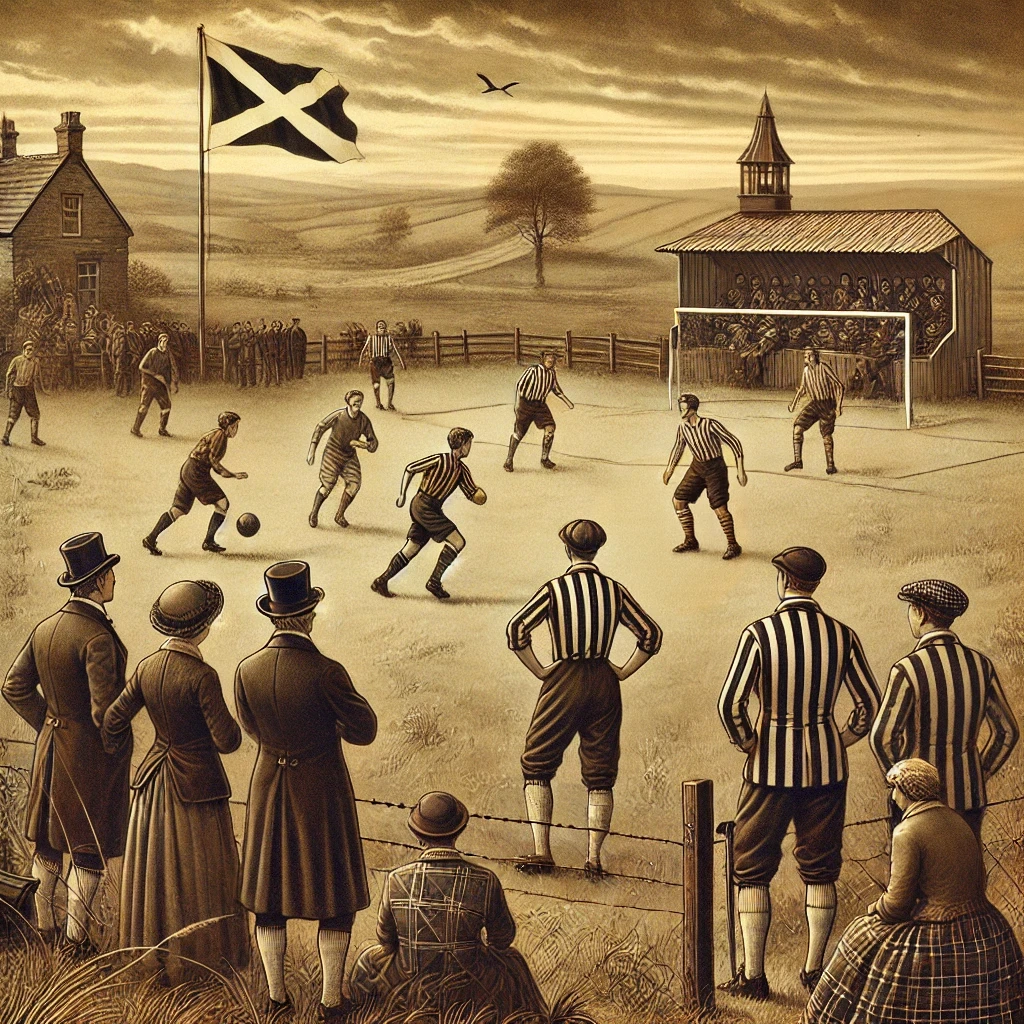The story of Southport Central’s formation in 1888 is one of ambition, collaboration, and, perhaps, Scottish influence. Today’s Southport FC owes much to its early roots, but the extent to which those roots were shaped by Scotland’s footballing traditions is an intriguing question. Were the Scots instrumental in the club’s foundation, or was their presence a coincidence in a rapidly growing game?
Robert McGown: A Bonhill Native
One of the key figures in Southport Central’s foundation was Robert McGown. Born in Bonhill, Scotland, in 1849, McGown moved to Southport by 1879, where he became secretary of High Park FC, a local club. When Southport Central was formed in 1888, McGown played a pivotal role, proposing the club’s name at a meeting at the Railway Hotel.
His background as a Scotsman is striking. Bonhill, near the Vale of Leven, was a hub of Scottish football, and McGown’s experience in the town’s industrial football culture would have given him insights into organising and running a successful club. Was it a mere coincidence that McGown, with his Scottish roots, became such a significant figure in Southport Central’s creation? Or did his upbringing in a football-obsessed region influence the club’s ethos and direction?
John Brydone Watson: A Visionary Scot
Another key figure in Southport Central’s early history was John Brydone Watson, a Scotsman born in Tranent in 1825. Watson, a prominent resident of Southport, played a vital role in shaping the club’s direction. At a meeting on 29 August 1888, he announced that the club would bring in “foreign talent” by paying players—a significant and forward-thinking decision at the time.
While Scotland had not embraced professionalism during this period, its footballers were already making a significant impact in England. With professionalism banned in Scotland in the mid-1880s (it was not legalised until 1893), many talented Scottish players crossed the border to England, seeking opportunities to earn a living through the game. Watson’s Scottish roots, combined with his understanding of the growing professional game in England, likely influenced his vision for Southport Central to attract skilled players from this emerging talent pool.
By tapping into the influx of Scottish players looking for professional opportunities, Watson ensured that Southport Central could build a competitive team, laying the groundwork for the club’s early success.
Was this simply a practical move to compete with other clubs, or did Watson’s Scottish background inspire his forward-thinking approach?
Charlie McLaren: An Early Professional
The club’s early recruitment strategy brought in players like Charlie McLaren, a forward from Vale of Leven, Scotland. McLaren joined Southport Central in January 1890, described in the Liverpool Echo as a promising “twenty-one-year-old,” though records suggest he was actually 23 or 24 at the time.
McLaren’s move to Southport reflects the broader migration of Scottish players to English clubs during this period, driven by the lure of professionalism. Though McLaren’s playing record at Vale of Leven FC is unclear, his arrival at Southport Central highlights the club’s commitment to attracting talent from Scotland. Was McLaren’s signing part of a deliberate effort to draw on Scottish football’s talent pool, or was it simply a reflection of the growing professionalisation of the game?
Scottish Influence or Coincidence?
There’s no doubt that Scots played prominent roles in Southport Central’s early years. McGown’s organisational leadership, Watson’s professional vision, and McLaren’s on-field contributions all shaped the club’s foundation and growth. Yet, whether their influence was uniquely Scottish is open to interpretation.
Scotland was a footballing powerhouse in the late 19th century, producing players and administrators who spread the game across Britain. It is largely thanks to Scottish influence that we have the “combination” passing game and not the individual dribbling game. It’s possible that McGown and Watson brought some of these traditions to Southport, consciously or otherwise. Alternatively, their Scottish heritage may simply be a fascinating detail in a broader story of football’s rapid growth in Southport.
What Do You Think?
Was Southport Central a product of Scottish influence, or were the Scots who played roles in its foundation simply part of a larger trend of football’s expansion in England? The evidence invites interpretation. McGown’s Bonhill roots, Watson’s leadership, and McLaren’s arrival suggest a strong Scottish connection—but whether this shaped the club’s identity or was merely incidental is a question that lingers.
The answer may depend on how you view the early days of football: as a series of local coincidences or as part of a larger narrative of Scottish innovation spreading south. Either way, the story of Southport Central remains a compelling chapter in the history of the modern football club.
Discover more from Southport Central
Subscribe to get the latest posts sent to your email.

 2 - 1 v Oxford City (A) 18/10/2025
2 - 1 v Oxford City (A) 18/10/2025 




More Stories
The Price Of Saying No
Friday Night Football
Fifty Years On: Counting the Cash, Missing the Moment